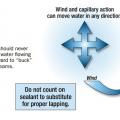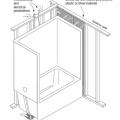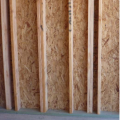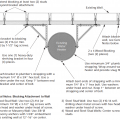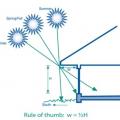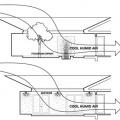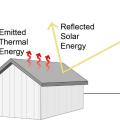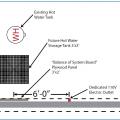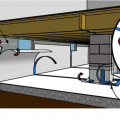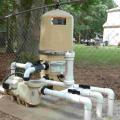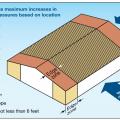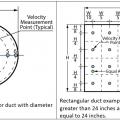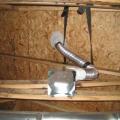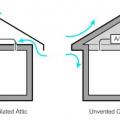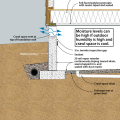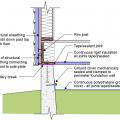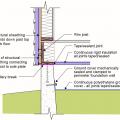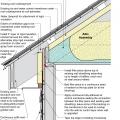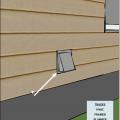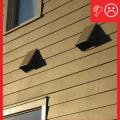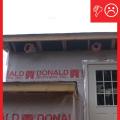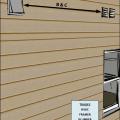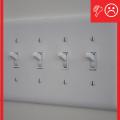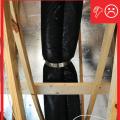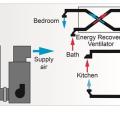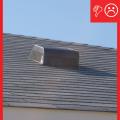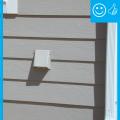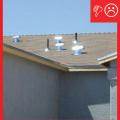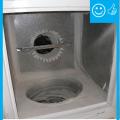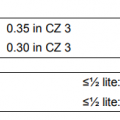Showing results 4201 - 4250 of 4973
Use plumbers metal strapping, wood blocking, and shelving brackets to secure a water heater in a corner to prevent tipping during an earthquake.
Use strapping, wood blocking, and shelving brackets to secure a water heater to a straight wall to prevent tipping during an earthquake.
Using dry wall clips or a 1x nailer strip to avoid the third stud in corners provides more room for insulation and reduces lumber.
Using outdoor misters or spray fountains can cool the outside air before it enters the house
Using roof and wall materials with a high Solar Reflectance Index (SRI) will reduce heat gains.
Utilities are commonly recessed into cutouts in the foam after concrete has been poured
Vapor retarder already applied to the floor of the crawlspace and wrapping up the interior perimeter walls, lapped and sealed at the seams
Vapor-permeable mineral wool insulation is installed on the exterior side of the sill beam during an exterior wall retrofit to allow the sill beam to dry to the outside
Variable-speed pool pumps can cut energy use by 50% to 90% compared to standard single-speed pumps
Variation of maximum negative main wind force resisting system (MWFRS) pressures based on envelope procedures for low-rise buildings.
Vegetated swales help to control storm water runoff and can filter out pollutants.
Vegetated swales, pervious pavers, pocket parks, and retention of existing trees all help to minimize runoff and lessen impacts on municipal sewer systems.
Vegetation types are grouped by water usage in a technique known as hydrozoning to reduce overall water consumption.
Velocity measurement locations for round and rectangular ducts; velocity measurements should be taken at several locations representative of equal sectional areas across the duct cross-sectional area
Vent the kitchen fan exhaust directly to the outside, not into an attic, crawlspace, or space between floors
Vented crawlspace cripple wall has seismic retrofits – plywood is added on interior that fastens to extra blocking added at sill plate and connected to foundation with new anchor bolts
Vented roof assembly at eave retrofitted with rigid foam, spray foam, and fully adhered membrane to air seal the top of wall-to-roof transition
Vented roof assembly at rake retrofitted with spray foam and additional insulation installed at the attic floor and extended to the rake edge
Ventilation air comes directly from outdoors, not from adjacent dwelling units, garages, crawlspaces, or attics
Ventilation air inlets ≥ 2 ft. above grade or roof deck in Climate Zones 1-3 or ≥ 4 ft. above grade or roof deck in Climate Zones 4-8 and not obstructed
Ventilation air inlets located ≥10 ft. of stretched-string distance from known contamination sources such as stack, vent, exhaust hood, or vehicle exhaust
Ventilation air inlets provided with rodent / insect screen with ≤ 0.5 inch mesh
Ventilation in this dwelling unit is provided by an Energy Recovery Ventilator; local kitchen exhaust is provided by a range hood with a dedicated makeup air intake; conditioned air is provided by an air handler
Ventilation in this unit is provided by an Energy Recovery Ventilator; local kitchen exhaust is provided by a range hood with a dedicated makeup air intake; conditioned air is provided by an air handler and dehumidification is provided separately
Ventilation inlet is not near any exhaust outlets/contamination sources and is at least 2 ft. above the roof deck
Ventilation inlet is too close to exhaust outlets and does not extend at least 2 ft. above the roof deck

